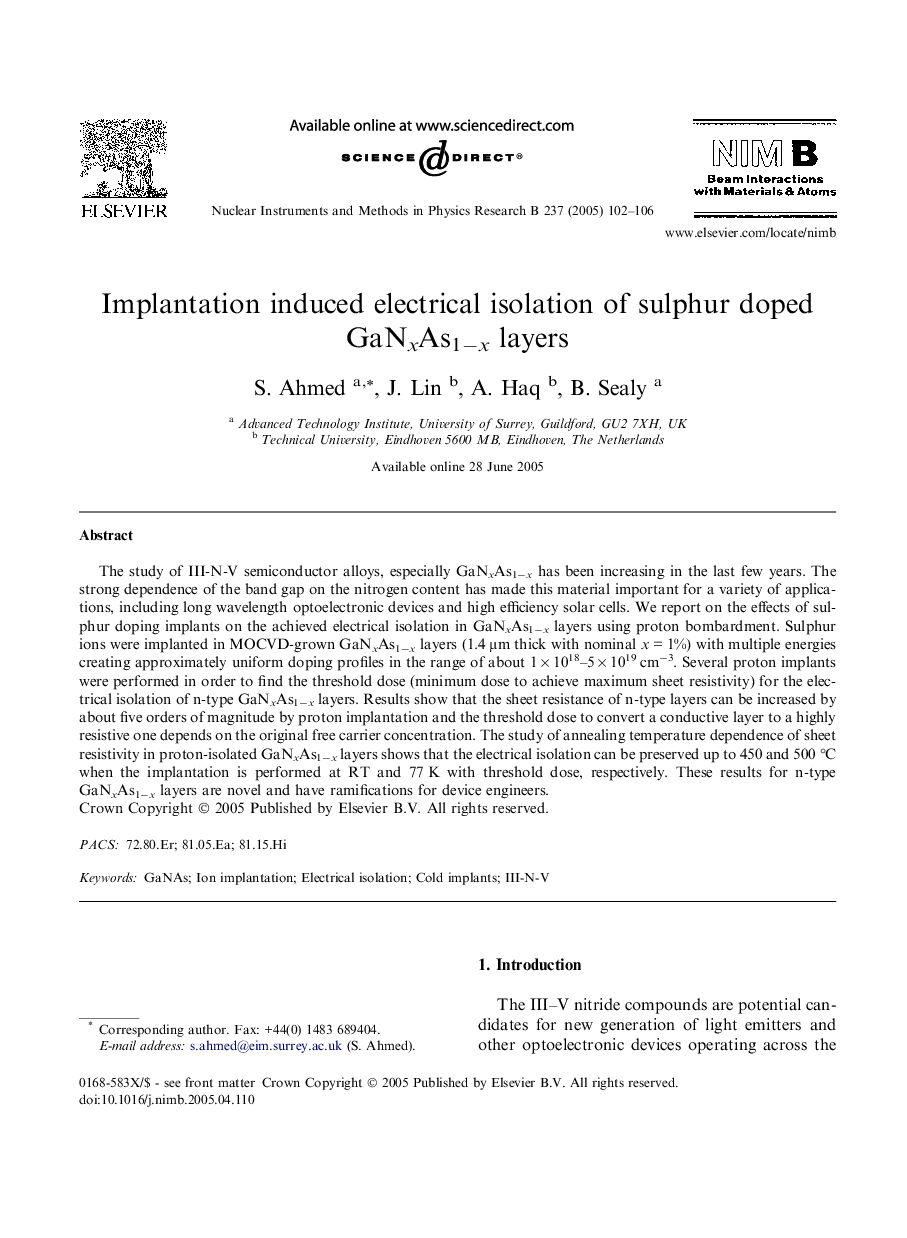| Article ID | Journal | Published Year | Pages | File Type |
|---|---|---|---|---|
| 9817729 | Nuclear Instruments and Methods in Physics Research Section B: Beam Interactions with Materials and Atoms | 2005 | 5 Pages |
Abstract
The study of III-N-V semiconductor alloys, especially GaNxAs1âx has been increasing in the last few years. The strong dependence of the band gap on the nitrogen content has made this material important for a variety of applications, including long wavelength optoelectronic devices and high efficiency solar cells. We report on the effects of sulphur doping implants on the achieved electrical isolation in GaNxAs1âx layers using proton bombardment. Sulphur ions were implanted in MOCVD-grown GaNxAs1âx layers (1.4 μm thick with nominal x = 1%) with multiple energies creating approximately uniform doping profiles in the range of about 1 Ã 1018-5 Ã 1019 cmâ3. Several proton implants were performed in order to find the threshold dose (minimum dose to achieve maximum sheet resistivity) for the electrical isolation of n-type GaNxAs1âx layers. Results show that the sheet resistance of n-type layers can be increased by about five orders of magnitude by proton implantation and the threshold dose to convert a conductive layer to a highly resistive one depends on the original free carrier concentration. The study of annealing temperature dependence of sheet resistivity in proton-isolated GaNxAs1âx layers shows that the electrical isolation can be preserved up to 450 and 500 °C when the implantation is performed at RT and 77 K with threshold dose, respectively. These results for n-type GaNxAs1âx layers are novel and have ramifications for device engineers.
Related Topics
Physical Sciences and Engineering
Materials Science
Surfaces, Coatings and Films
Authors
S. Ahmed, J. Lin, A. Haq, B. Sealy,
